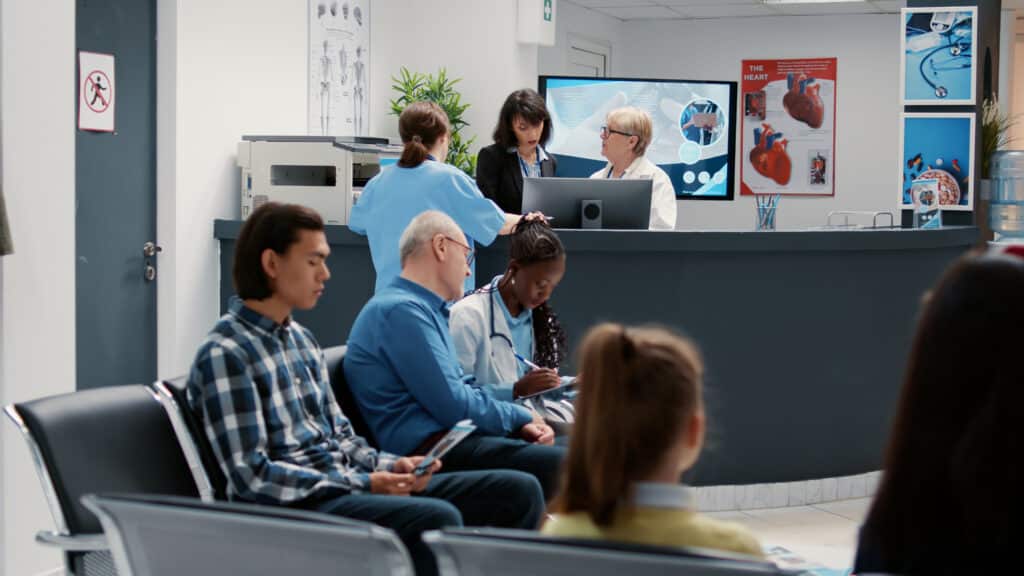
You’ve probably experienced it firsthand: the exam room is prepped, your staff is ready, but the patient never arrives. No call, no notice—just lost time and an unfilled slot in your day. And you’re not alone.
A 2024 MGMA Stat poll found that 37% of medical groups experienced an increase in patient no-shows, despite using solutions such as reminders and no-show fees.
The practices that have seen real progress are taking a more proactive, tech-enabled approach, leveraging predictive analytics, integrated check-in systems, and smarter scheduling workflows to reduce patient no-shows and keep schedules running smoothly.
In this blog, we’ll explore the common reasons patients miss appointments and how strategies supported by modern patient appointment software minimize no-show rates in healthcare.
See How High-Performing Practices Reduce Patient No-Shows
Why Missed Appointments Matter More Than You Think
Each missed appointment translates into a direct revenue loss. If your average visit generates $150, just ten no-shows a week could result in nearly $78,000 annual losses.
Beyond the per-visit cost, repeated no-shows disrupt care plans, delay preventive screenings, and lead to poorer outcomes, especially for patients with chronic conditions. They also throw off your schedule, strain your staff, and increase administrative workload. That’s why implementing the right patient no-show solutions is essential for both financial stability and improved care continuity.
Common Reasons Behind Patient No-Shows
Before jumping into how to prevent patient no-shows, it’s important to understand why they happen in the first place. In most cases, it’s not because they’re careless or uninterested—it’s because something got in the way.
Here are some of the most common reasons patients miss their appointments:
Forgetfulness
Between work, family, and daily responsibilities, it’s easy for patients to lose track, especially if the appointment was scheduled weeks in advance. Without timely reminders, even the most well-meaning patients can forget to show up.
Lack of Transportation
Getting to the clinic isn’t always simple. Some patients may not have access to a car, live in remote areas, or rely on others for rides. This challenge is especially common among older adults, people with disabilities, or those in underserved communities.
Unexpected Emergencies
Life can be unpredictable, and when patients have competing priorities, healthcare appointments often take a back seat. Even patients with the best intentions may have no choice but to skip or cancel at the last minute when urgent matters arise.
Poor Communication
Miscommunication is another major culprit. Maybe the patient didn’t realize the time or location had changed, or they weren’t sure how to cancel. Complicated, unclear processes increase the likelihood of no-shows.
How to Prevent Patient No-Shows and Fill Last-Minute Gaps
While you can’t eliminate no-shows entirely, you can significantly reduce them by combining policy, technology, and patient-friendly processes. A few simple adjustments, along with the right practice management software, can make a noticeable difference in decreasing appointment cancellations and keeping your schedule on track.
Here are some proven strategies to reduce patient no-shows using reliable tools from EMR‑EHR’s practice management software:
Implement Automated Reminders
Forgetfulness is one of the top causes of no-shows, and automated reminders are your first line of defense. With EMR‑EHR, you can send personalized appointment reminders by text, email, or voice call—whichever method your patient prefers. These reminders can also include convenient options to confirm, cancel, or request a different time, helping you avoid last-minute surprises.
For best results, use a two-touch reminder strategy:
- First reminder: 48 to 72 hours before the appointment
- Final reminder: 24 hours before the visit
This gives patients enough time to reschedule if needed, plus a final nudge to arrive on time for their appointment.
Make Scheduling Simple and Flexible
One of the most effective ways to minimize no-show rates in healthcare is to make scheduling and rescheduling easy. Our patient appointment software offers real-time calendar access, provider availability views, and drag-and-drop functionality to help your staff manage appointments with minimal effort.
Fill Gaps Fast with Waitlist Management
Cancellations don’t have to mean lost time or revenue. Our practice management software features smart waitlist management capabilities, allowing your staff to quickly fill last-minute openings by offering the slot to other patients who want to be seen sooner. This keeps your schedule productive and your patients satisfied.
Use Patient Portals for Better Communication
Miscommunication is one of the top reasons patients miss appointments. EMR‑EHR provides secure messaging and a user-friendly portal so your patients always know where to go, when to arrive, and what to expect. It also gives them a clear way to contact you if anything changes.
Monitor No-Show Trends
Sometimes, reducing patient no-shows starts with understanding your patterns. Our practice management system equips healthcare providers like you with built-in reporting tools that highlight no-show patterns, pinpointing when they’re most likely to occur, which appointment types are most at risk, and which patients tend to miss visits repeatedly. With these insights, you can take targeted action, like adjusting reminder timing or having proactive conversations with repeat offenders.
Offer Telehealth for More Flexibility

Some patients simply can’t make it into the office, but that doesn’t mean they have to miss out on care. With our patient appointment software, you can offer telehealth appointments for appropriate visits such as check-ins, medication follow-ups, or lab result reviews.
Whether a patient is facing transportation issues, schedule conflicts, or other barriers, telehealth gives them a convenient and effective way to stay engaged in their care.
Reduce Patient No-Shows with EMR‑EHR’s Practice Management Software
We know managing patient no-shows isn’t easy. It disrupts your workflow, strains your staff, affects revenue, and, most importantly, impacts patient care. While the causes, like last-minute conflicts, transportation issues, or simple forgetfulness, are often beyond your control, the way you address them doesn’t have to be.
That’s where EMR‑EHR’s practice management software comes in. It’s built to help you take a proactive approach with tools that streamline scheduling, automate reminders, improve communication, and provide actionable insights into no-show trends. When your processes are aligned and your patients feel supported, you create a more dependable, efficient practice that decreases appointment cancellations.
If you’re ready to regain control of your schedule and reduce patient no-shows for good, we’re here to help. Schedule a demo today and discover how our software, IMS, can make a lasting difference for your team and your patients.
Make Missed Appointments a Rare Exception
Frequently Asked Questions
How do I know if our no-show rate is above average?
Most practices aim for a no-show rate under 5%. If yours is consistently higher, it may signal a need to revisit your current strategies to reduce patient no-shows. Start by evaluating your scheduling workflows, communication touchpoints, and reminder systems—small inefficiencies in these areas can quickly add up to frequently missed appointments.
What metrics should I track to measure success?
Track your no-show rate, cancellation rate, appointment lead times, and patient rescheduling rates. EMR-EHR’s built-in analytics tools help you monitor these KPIs with ease.
How do I encourage patients to confirm or cancel appointments?
EMR-EHR offers multi-channel reminders with built-in confirm/cancel options, making it easy for patients to respond and for staff to manage the schedule in real-time.
Can these tools improve overall patient engagement, not just reduce no-shows?
Absolutely! Empowering patients with flexible scheduling tools can significantly decrease appointment cancellations and support better care continuity.






